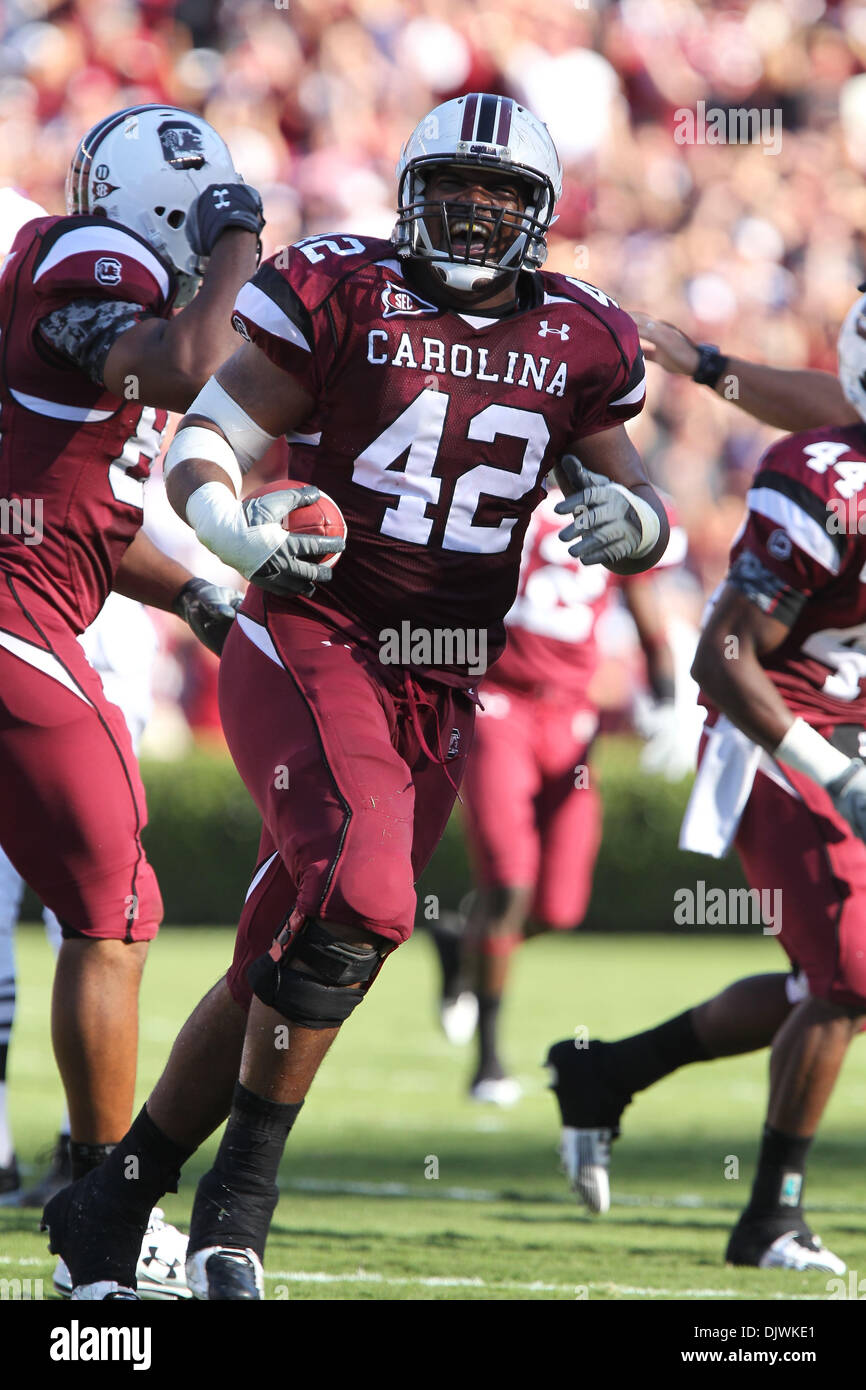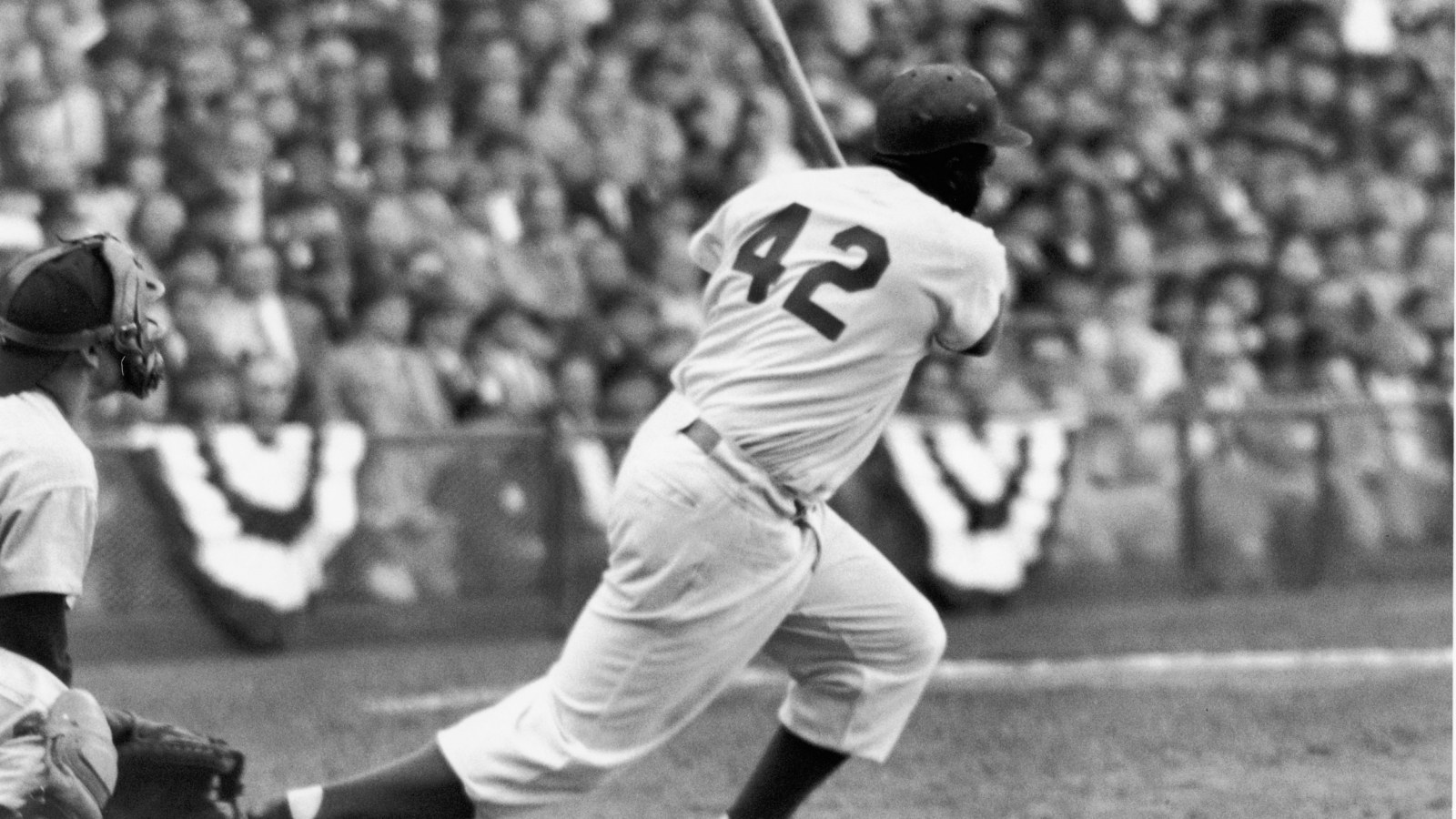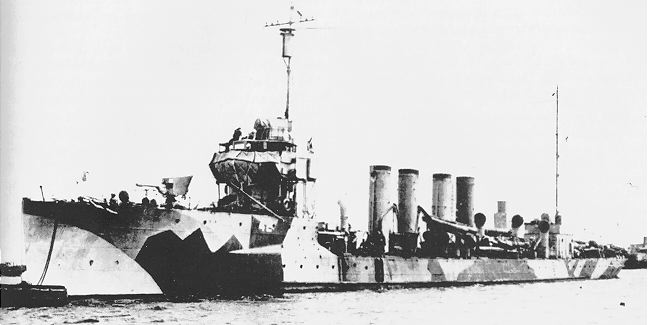Gamecock Fanatics
You are using an out of date browser. It may not display this or other websites correctly.
You should upgrade or use an alternative browser.
You should upgrade or use an alternative browser.
Countdown to Kickoff
- Thread starter Swayin
- Start date
USS George W. Ingram, APD-43. Formerly DE-62.
_underway_at_sea,_circa_1944_(NH_79804).jpg/1280px-USS_George_W._Ingram_(DE-62)_underway_at_sea,_circa_1944_(NH_79804).jpg)
_underway_at_sea,_circa_1944_(NH_79804).jpg/1280px-USS_George_W._Ingram_(DE-62)_underway_at_sea,_circa_1944_(NH_79804).jpg)
https://en.wikipedia.org/wiki/USS_George_W._Ingram_(DE-62)George W. Ingram was named in honor of Seaman George Washington Ingram (1918–1941), who was killed in action during the Japanese attack on the Hawaiian Islands. She laid down on 6 February 1943 at the Bethlehem-Hingham Shipyard, Inc., in Hingham, Massachusetts; launched on 8 May 1943, sponsored by Mrs. James L. Ingram, mother of Seaman Second Class Ingram, and commissioned on 11 August 1943, with Lieutenant Commander Ernest R. Perry in command.
Never been, but don't they have one of the shuttles there too?Sikorsky S-43 seaplane. Known as the Baby Clipper. Military classification was JRS-1.
The Smithsonian National Air & Space Museum's Steven F. Udvar-Hazy Center in Virginia has now put a Sikorsky JRS-1 on display. This aircraft was on duty at Pearl Harbor on December 7th, 1941.
https://en.wikipedia.org/wiki/Steven_F._Udvar-Hazy_Center
Okay, I have been to the Air & Space Museum a long time ago, but never knew this other place existed until now.
Fly non-stop into Dulles on a Friday, grab a local hotel room, wander around this place without having to deal with DC traffic, then jet home Sunday.
I now have a new item for my bucket list.
Go Cocks!!
Never have had to fly to Dulles before. That's a great question.Never been, but don't they have one of the shuttles there too?
The late Kenny Irwin, Jr. Lots of NASCAR drivers owe their lives to him and Adam Petty along with Dale, Sr., because of the HANS device developed after their deaths.


Last edited by a moderator:
USS Idaho, BB-42, was the fourth ship of the United States Navy to be named for the 43rd state. She was the third of three ships of her class. Built by the New York Shipbuilding Corporation of Camden, New Jersey, she was launched in June 1917 and commissioned in March 1919. She was armed with a battery of twelve 14-inch (356 mm) guns in four three-gun turrets, and was protected by heavy armor plate, with her main belt armor being 13.5 inches (343 mm) thick.
Idaho spent most of the 1920s and 1930s in the Pacific Fleet, where she conducted routine training exercises. Like her sister ships, she was modernized in the early 1930s. In mid-1941, before the United States entered World War II, Idaho and her sisters were sent to join the Neutrality Patrols that protected American shipping during the Battle of the Atlantic. After Japan attacked Pearl Harbor on 7 December 1941, Idaho and her sisters were sent to the Pacific, where she supported amphibious operations in the Pacific. She shelled Japanese forces during the Gilbert and Marshall Islands and the Philippines campaigns and the invasions of Peleliu, Iwo Jima, and Okinawa.
Idaho was among the ships present in Tokyo Bay when Japan formally surrendered on 2 September 1945. With the war over, the ship was decommissioned in July 1946. She was sold to ship breakers in November 1947 and subsequently dismantled.

Idaho spent most of the 1920s and 1930s in the Pacific Fleet, where she conducted routine training exercises. Like her sister ships, she was modernized in the early 1930s. In mid-1941, before the United States entered World War II, Idaho and her sisters were sent to join the Neutrality Patrols that protected American shipping during the Battle of the Atlantic. After Japan attacked Pearl Harbor on 7 December 1941, Idaho and her sisters were sent to the Pacific, where she supported amphibious operations in the Pacific. She shelled Japanese forces during the Gilbert and Marshall Islands and the Philippines campaigns and the invasions of Peleliu, Iwo Jima, and Okinawa.
Idaho was among the ships present in Tokyo Bay when Japan formally surrendered on 2 September 1945. With the war over, the ship was decommissioned in July 1946. She was sold to ship breakers in November 1947 and subsequently dismantled.

Douglas XB-42 Mixmaster, an experimental bomber aircraft, designed for a high top speed. The unconventional approach was to mount the two engines within the fuselage driving a pair of contra-rotating propellers mounted at the tail in a pusher configuration, leaving the wing and fuselage clean and free of drag-inducing protrusions.
Two prototype aircraft were built, but the end of World War II changed priorities and the advent of the jet engine gave an alternative way toward achieving high speed.

Two prototype aircraft were built, but the end of World War II changed priorities and the advent of the jet engine gave an alternative way toward achieving high speed.

Sikorsky S-42 four-engine seaplane. The famed Pan Am Clipper.


https://en.wikipedia.org/wiki/Sikorsky_S-42Flying for Pan American Airways, a total of ten S-42s were built, manufactured by the Vought-Sikorsky Aircraft Division of the United Aircraft Corporation in Stratford, Connecticut. The prototype first flew on March 30, 1934.
Pan American was the sole customer for the S-42. The S-42 Pan Am Clipper surveyed the route from the US West Coast to China, making the first survey flight from Alameda, California to Pearl Harbor, Hawaii in April 1935.
#42 Shed Diggs (1984-87).

I will let the video tell the story of Shed and Jordan Diggs, who both wore the #42 for us.
The video was released in January 2016. Shed was released and was finally able to watch his son play ball in person later that year during the 2016 season, Jordan's last season here.
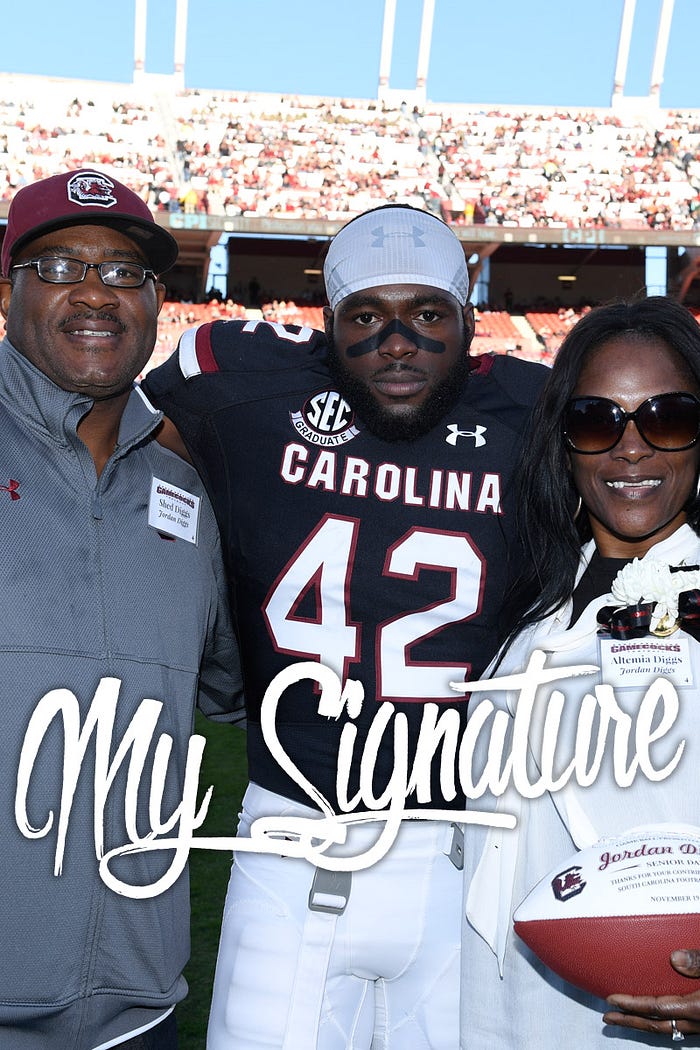
https://medium.com/gamecocksonline-com/my-signature-jordan-diggs-9ec6c5ea4522
My takeaway from their story is the commitment of both Shed and Jordan to their family, which undoubtedly got reinforced during both their times here, is what got them through the difficult times and kept them together. Shed was committed to taking care of his family to the point of taking some risks after losing his job only to have the odds catch up to him.
A great story of both overcoming pitfalls and also avoiding them. Sa-lute.
Here is a comparison of Shed's and Jordan's stats while they were here:
#42 Weak-Side LB/Left DE Shed Diggs (1984-87)
Year
Solo
Ast
Tkl
TFL
Sacks
Int
1984
4
30
34
2
2
1985
14
51
65
5
2
1986
44
19
63
5
1
1987
24
23
47
3
2
Tot
86
123
209
15
7
#42 Spur/Safety Jordan Diggs (2012-16)
Year
Solo
Ast
Tkl
TFL
Sacks
Int
2012
4
1
5
1
0
2013
16
9
25
4
0
2014
28
9
37
5
2
2015
25
23
48
0.5
0
1
2016
12
13
25
1
0
Tot
85
55
140
11.5
2
1
They played different positions, but Shed's 209 tackles tell the story of that Fire Ant defense that always gave us a chance to win games on Saturdays. Sure, the game has changed some since then, but the Defense always needs to be there.
I will let the video tell the story of Shed and Jordan Diggs, who both wore the #42 for us.
The video was released in January 2016. Shed was released and was finally able to watch his son play ball in person later that year during the 2016 season, Jordan's last season here.

https://medium.com/gamecocksonline-com/my-signature-jordan-diggs-9ec6c5ea4522
My takeaway from their story is the commitment of both Shed and Jordan to their family, which undoubtedly got reinforced during both their times here, is what got them through the difficult times and kept them together. Shed was committed to taking care of his family to the point of taking some risks after losing his job only to have the odds catch up to him.
A great story of both overcoming pitfalls and also avoiding them. Sa-lute.
Here is a comparison of Shed's and Jordan's stats while they were here:
#42 Weak-Side LB/Left DE Shed Diggs (1984-87)
Year
Solo
Ast
Tkl
TFL
Sacks
Int
1984
4
30
34
2
2
1985
14
51
65
5
2
1986
44
19
63
5
1
1987
24
23
47
3
2
Tot
86
123
209
15
7
#42 Spur/Safety Jordan Diggs (2012-16)
Year
Solo
Ast
Tkl
TFL
Sacks
Int
2012
4
1
5
1
0
2013
16
9
25
4
0
2014
28
9
37
5
2
2015
25
23
48
0.5
0
1
2016
12
13
25
1
0
Tot
85
55
140
11.5
2
1
They played different positions, but Shed's 209 tackles tell the story of that Fire Ant defense that always gave us a chance to win games on Saturdays. Sure, the game has changed some since then, but the Defense always needs to be there.
Last edited by a moderator:
USS Savannah, CL-42.
_off_New_England_1944.jpg)

https://en.wikipedia.org/wiki/USS_Savannah_(CL-42)
The first Navy ship in WW2 to be hit by one of the first guided missiles was pretty smart at gunnery herself.
Sa-lute.
_off_New_England_1944.jpg)
Memorial plaque to the ship in Savannah, GA.Invasion of Salerno
Savannah returned to Algiers on 10 August 1943 in order to train with U.S. Army troops for the Operation Avalanche amphibious landings to be made at Salerno, Italy. Leaving Mers-el-Kebir Harbor, Algeria, on 5 September, her Southern Attack Force entered Salerno Bay a few hours before midnight of the 8th.
Savannah was the first American ship to open fire against the German shore defenses in Salerno Bay. She silenced a railroad artillery battery with 57 rounds, forced the retirement of enemy tanks, and completed eight more fire support missions that day. She continued her valuable support until the morning of 11 September 1943, when she was put out of action.
A radio-controlled Fritz X PGM gravity bomb had been released at a safe distance by a high-flying German warplane and it exploded 49 ft (15 m) distance from Philadelphia. Savannah increased her speed to 20 kn (23 mph, 37 km/h) as a KG 100 Dornier Do 217 K-2 bomber approached from out of the sun. The USAAF's P-38 Lightnings and Savannah's anti-aircraft gunners, tracking this warplane at 18,700 ft (5,700 m), failed to stop the Fritz X bomb, trailing a stream of smoke. The bomb pierced the armored turret roof of Savannah's No. 3 gun turret, passed through three decks into the lower ammunition-handling room, where it exploded, blowing a hole in her keel and tearing a seam in the cruiser's port side. For at least 30 minutes, secondary explosions in the turret and its ammunition supply rooms hampered firefighting efforts.
Savannah's crew quickly sealed off flooded and burned compartments, and corrected her list. With assistance from the salvage tugs Hopi and Moreno, Savannah got underway under her own steam by 1757 hours and steamed for Malta.
Savannah lost 197 crewmen in this German counterattack. Fifteen other sailors were seriously wounded, and four more were trapped in a watertight compartment for 60 hours. These four sailors were not rescued until Savannah had already arrived at Grand Harbor, Valletta, Malta, on 12 September.
In literature and popular culture
The Battle of Sicily: How the Allies Lost Their Chance for Total Victory (Mitcham & von Stauffenberg; 1991) described Savannah in the 11 July 1943 Amphibious Battle of Gela, Sicily, as having fired 500 rounds from its fifteen six-inch guns onto the Italian Livorno Division, and was said to have broken the back of the Italian attack against U.S. Army Rangers who then took 400 Italian prisoners; Rangers Lead the Way (Taylor, 1996) characterized Savannah as "the Rangers' favorite cruiser" for this action. Taylor also credited Savannah with firing on German forces from twelve miles away to enable U.S. forces to seize the first high ground overlooking Gela.
In the 1980 movie "The Big Red One," Lee Marvin's character Sergeant Possum praised Savannah for firing on enemy artillery from miles offshore, as Hermann Göring's Panzer division approached Possum's position in a cave with their backs to the sea, Possum exclaiming that "the U.S. Navy saved our ass."

https://en.wikipedia.org/wiki/USS_Savannah_(CL-42)
The first Navy ship in WW2 to be hit by one of the first guided missiles was pretty smart at gunnery herself.
Sa-lute.
Last edited by a moderator:
USS Gantner, APD-42. Formerly DE-60.
_underway_off_New_York_City_on_22_July_1944_(NH_91549).jpg/1280px-USS_Gantner_(DE-60)_underway_off_New_York_City_on_22_July_1944_(NH_91549).jpg)
_underway_off_New_York_City_on_22_July_1944_(NH_91549).jpg/1280px-USS_Gantner_(DE-60)_underway_off_New_York_City_on_22_July_1944_(NH_91549).jpg)
https://en.wikipedia.org/wiki/USS_Gantner_(DE-60)USS Gantner (DE-60/APD-42), a Buckley-class destroyer escort of the United States Navy, was named in honor of Boatswain's Mate Samuel Merritt Gantner (1919-1941), who was killed in action during the Japanese attack on the Hawaiian Islands.
Gantner was launched on 17 April 1943 by the Bethlehem Steel Company, Quincy, Massachusetts, sponsored by Mrs. Samuel M. Gantner, widow of Boatswain's Mate Gantner; commissioned at the Boston Navy Yard on 23 July 1943, with Lieutenant Commander Barklie M. Henry in command.
Helluva story!USS Savannah, CL-42.
Memorial plaque to the ship in Savannah, GA.
https://en.wikipedia.org/wiki/USS_Savannah_(CL-42)
The first Navy ship in WW2 to be hit by one of the first guided missiles was pretty smart at gunnery herself.
Sa-lute.
The late Tom Seaver.

Seems appropriate given the Mets' long-time minor league affiliation with Columbia that recently ended.

https://en.wikipedia.org/wiki/Tom_SeaverGeorge Thomas Seaver (November 17, 1944 – August 31, 2020), nicknamed "Tom Terrific" and "the Franchise", was an American professional baseball pitcher who played 20 seasons in Major League Baseball (MLB). He played for the New York Mets, Cincinnati Reds, Chicago White Sox, and Boston Red Sox from 1967 to 1986. A longtime Met, Seaver played a significant role in their victory in the 1969 World Series over the Baltimore Orioles.
With the Mets, Seaver won the National League's (NL) Rookie of the Year Award in 1967, and won three NL Cy Young Awards as the league's best pitcher. He was a 12-time All-Star and ranks as the Mets' all-time leader in wins. During his MLB career, he compiled 311 wins, 3,640 strikeouts, 61 shutouts, and a 2.86 earned run average, and he threw a no-hitter in 1978.
In 1992, Seaver was inducted into the Baseball Hall of Fame by the highest percentage of votes ever recorded at the time. Along with Mike Piazza, he is one of two players wearing a New York Mets hat on his plaque in the Hall of Fame. Seaver's No. 41 was retired by the Mets in 1988, and New York City changed the address of Citi Field to 41 Seaver Way in 2019. Seaver is also a member of the New York Mets Hall of Fame and the Cincinnati Reds Hall of Fame.
Seems appropriate given the Mets' long-time minor league affiliation with Columbia that recently ended.
Steve Grissom.



_off_the_Mare_Island_Naval_Shipyard_on_4_August_1943.jpg/1280px-USS_Nashville_(CL-43)_off_the_Mare_Island_Naval_Shipyard_on_4_August_1943.jpg)


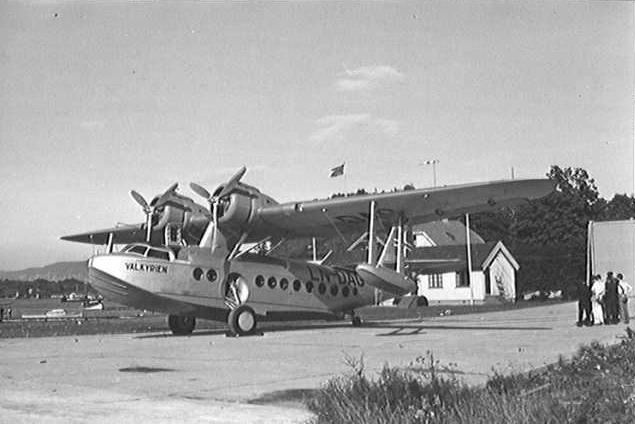
_on_exhibit_in_the_main_hall_of_the_Smithsonian's_Udvar-Hazy_Center.jpg/1920px-Sikorsky_JRS-1_(S-43)_on_exhibit_in_the_main_hall_of_the_Smithsonian's_Udvar-Hazy_Center.jpg)


